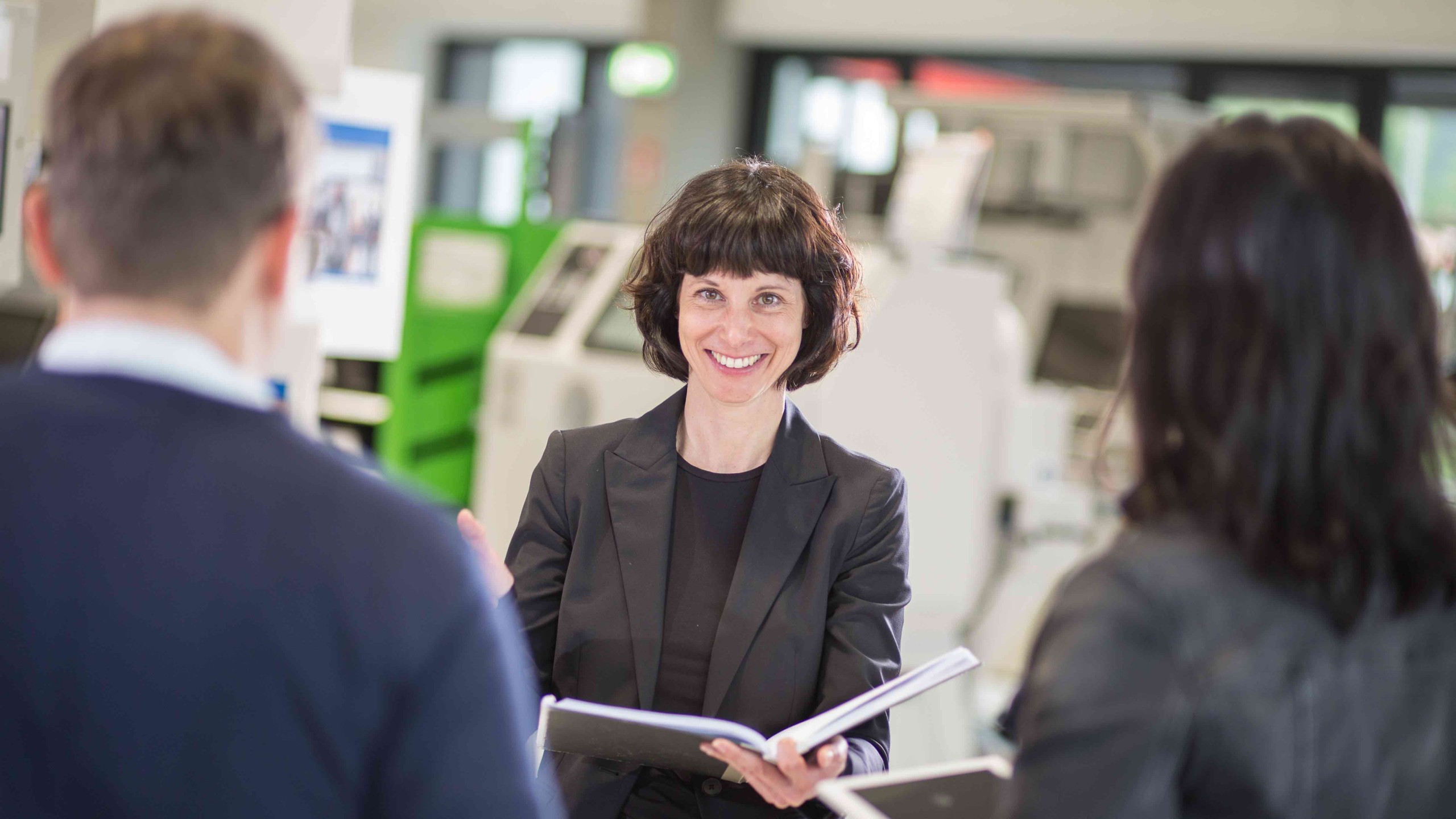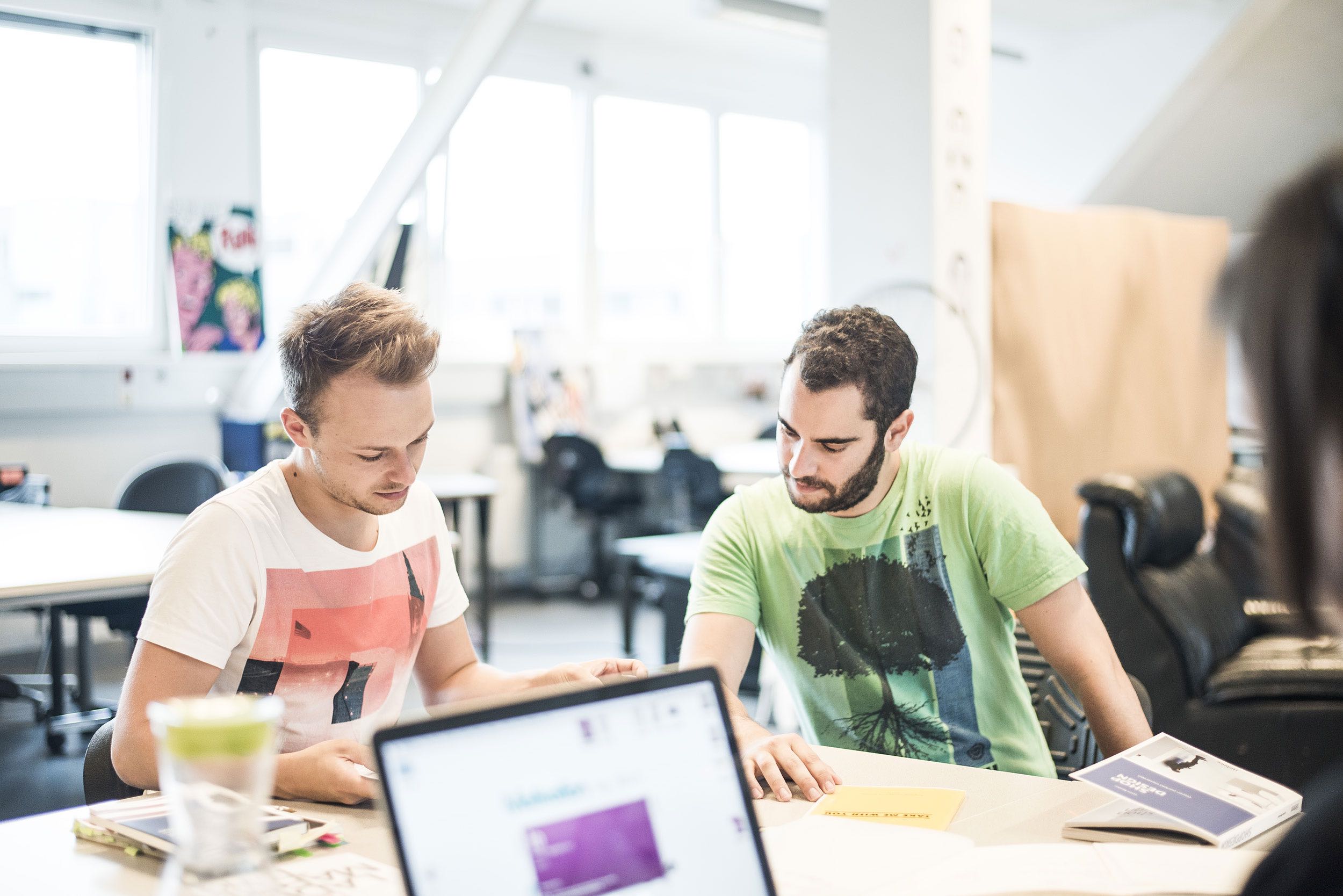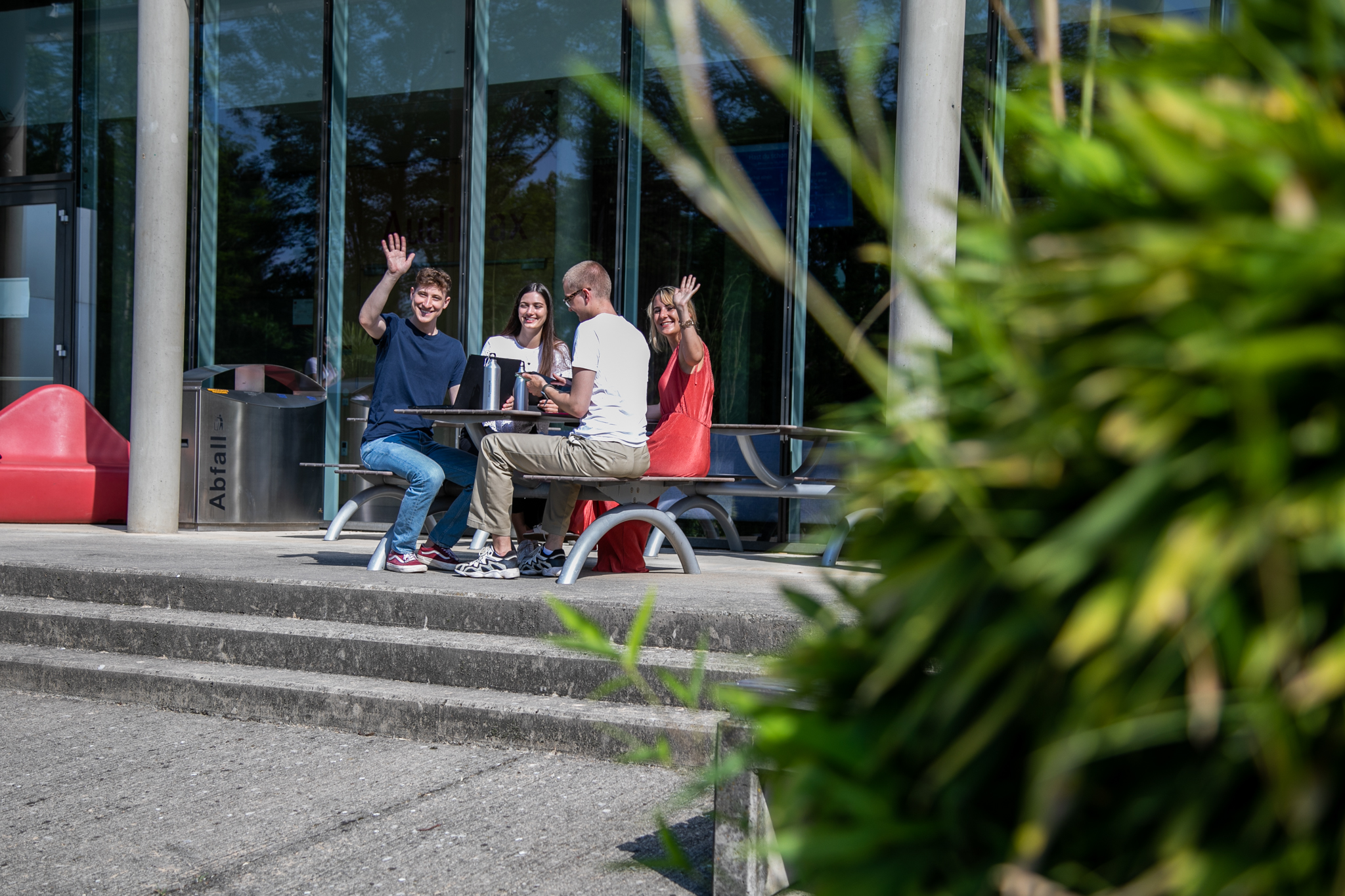From the bed to the desk and in between to the fridge: This is what everyday life is like for the students of “Journalism and Public Relations (PR)” during the Corona period.
Real study on a virtual campus
Paul Koren, Lena Lafer & Markus Lösel, 22. April 2021
The students of the Bachelor's programme “Journalism and Public Relations (PR)” are in their home office. Photo: Private
The alarm clock rings exactly at eight in the morning. There are 15 minutes left from waking up and the first class. What would bring panic to the faces of the students of the Bachelor’s programme “Journalism and Public Relations (PR)” on normal teaching days, leaves them cold these days. The reason for this: distance learning and home-studying. They ensure that you are just a click away from the lecturers and fellow students. Once you have made the click, the first students are already smiling at you.
After announcing this on Twitter with the hashtag #tweetingforthegrade, the lecture can begin. Sharing screens, virtually pointing out and calling out answers in a flash shape the students’ everyday online life. Even if the workflow is sometimes interrupted by technical problems or the mailman’s ringing, most of the students are satisfied with their conditions. 31 out of 40 respondents would rate distance learning at FH JOANNEUM as “very good” or “good”.
At the end of the course, the faces of fellow students disappear from the screen and you are once again sitting alone in the room. Unanswered questions to the lecturers are not clarified in person, as usual, but mainly by e-mail. This is what 23 out of 30 students in the classes of 2019 and 2020 state in a survey. Otherwise, contact is made via Microsoft Teams or social media. Chatting with fellow students has moved to WhatsApp. A short screen break, a bit of exercise or a small snack are highly recommended before the next online lecture takes place half an hour later.
Interaction despite online lessons
We know by now that “breakout rooms” are not virtual rooms to let off steam, but rather the place where group work is done and most conversations are held. The teachers try to encourage interaction and create incentives, thanks to which discussions can also take place in the plenary. How much the virtual show button has weakened our arm muscles will be shown back in classroom teaching. Questions like “Is the hand still up or is that from before?” will (hopefully) no longer be part of everyday life in the future.
After the first two lectures, one might feel a little bit exhausted, but then one has almost done it. A last shot of coffee often cures the concentration-induced exhaustion. The death of any educational added value are apparently fluffy four-legged friends. According to our survey, 71 percent are “easily” or “rather easily” distracted while listening to lectures over the loudspeakers. The main cause of this, apart from mobile phones and flatmates, are the cats. Fellow students, however, can also play a role here. Sometimes one discovers a grin that runs over the screen in a noticeably synchronised manner or an interestingly designed background that attracts one’s attention.

Photo: Private
The backgrounds of the students can be quite creative.

The background might be inspected in more detail in the evening, because despite the home office, the tradition of the weekly “Schnittwoch”, has already established itself among students. People meet on Wednesday evenings to indulge in “online emptiness” in conversation with fellow students after online teaching.
Written by Paul Koren, Lena Lafer und Markus Lösel, students of the Bachelor’s programme “Journalism and Public Relations (PR)”.










